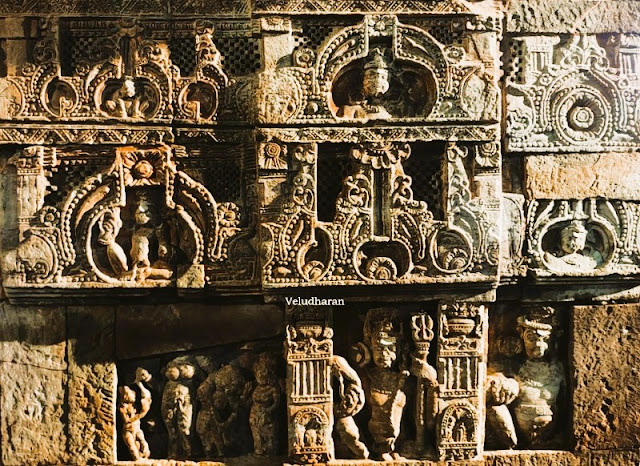The visit to this Shree Parasurameswara Temple at Bhubaneswar, Odisha was a part of the “Kalinga and Ottara Desa Heritage Walk” organized by சோழ மண்டல வரலாற்றுத் தேடல் குழு, between 13th to 18th September 2024. The purpose of this Heritage walk was to see the places, monuments, etc., which are directly or indirectly connected as proof of Rajendra Chozha-I’s victory mentioned in his Meikeerthi/title over Kalinga and Ottara Desa, the present Andhra Pradesh and Odisha.
A Sahasra Linga is in front of the Temple
PC-website
Moolavar: Shree Parasurameswara
Some of the salient features of this temple are….
The temple faces west and is dedicated to Shiva situated within a low enclosure wall. Moolavar, a Shiva Linga is in the sanctum sanctorum. A Sahasra Linga and a Shiva Lingam with snake kavasam are in the praharam.
ARCHITECTURE
Parsurameswara is one of the earliest intact temples in Bhubaneswar. This is a small but lavishly decorated and exquisitely finished temple and a typical representative example of the early Orissan Temples. Parsurameswara was originally known as Parasavara, named after a Lakulisa teacher. Apart from Images of Lakulisa, there are also depictions of Nataraja, Durga, Saptamatrika, Surya, musicians, and Ashta Dikpala deities. The episodes of Shiva occur in three different places in the main temple. The first in the front face, just above the jagamohan shows the scene of Ravana lifting Mount Kailash. The second episode is that of Annapurna offering alms to Shiva and the third is of Shiva's marriage scene.
The Temple consists of a Deula and Jagamohana. The Deula about 12.8 m has no platform. The Triratha temple has Trianga Bada with a squattish and thickest Gandi, While the Jagamohana instead of being a stepped pyramid tower is a rectangular peristyle, Structure Whose roof is in the form of a sloping terrace, above which is a clerestory over which there is another sloping roof with a flat top. The deula has niches for the Parivara devatas on three sides. The reliefs are narrative in character forming a repertoire of Shaiva myths. The carvings are chaste, elegant, and well-known for their sturdy volume. The exteriors of both Jagamohana and duela are profusely decorated and remarkable for cult images, especially, notable for their charming poses, suppleness of outlines, and restrained ornamentation.
HISTORY
Since there is no inscriptional evidence found in this temple to prove its antiquity, the temple is assignable to circa 7th Century. The Inscription on the southern door of jagamohan indicates that the earlier name of this temple was Parasaresvar.
Ref:
1. Archaeological Survey of India Website.
2. Display board installed at the entrance of the Temple.
LOCATION OF THE TEMPLE: CLICK HERE
--- OM SHIVAYA NAMA---




















No comments:
Post a Comment